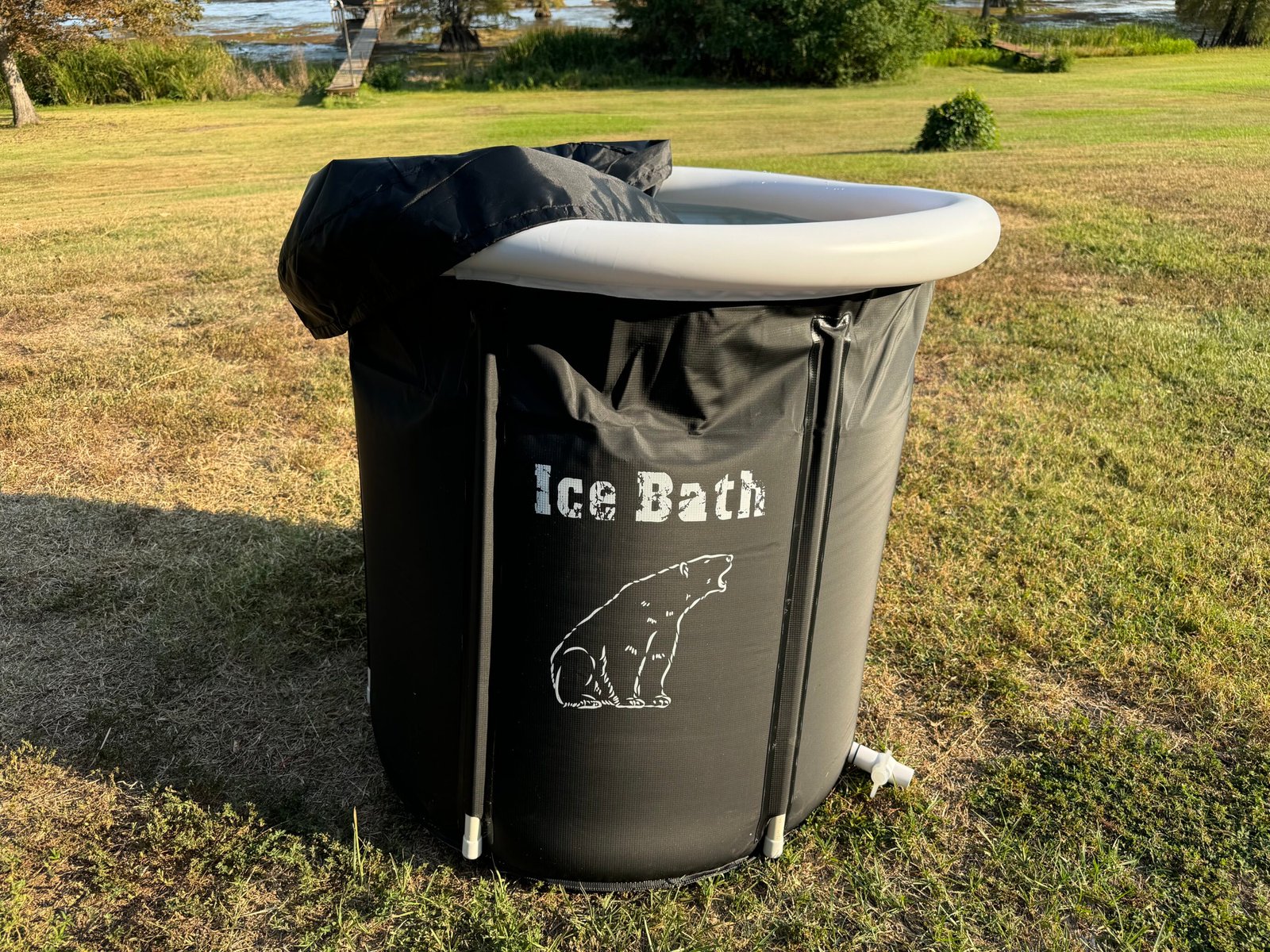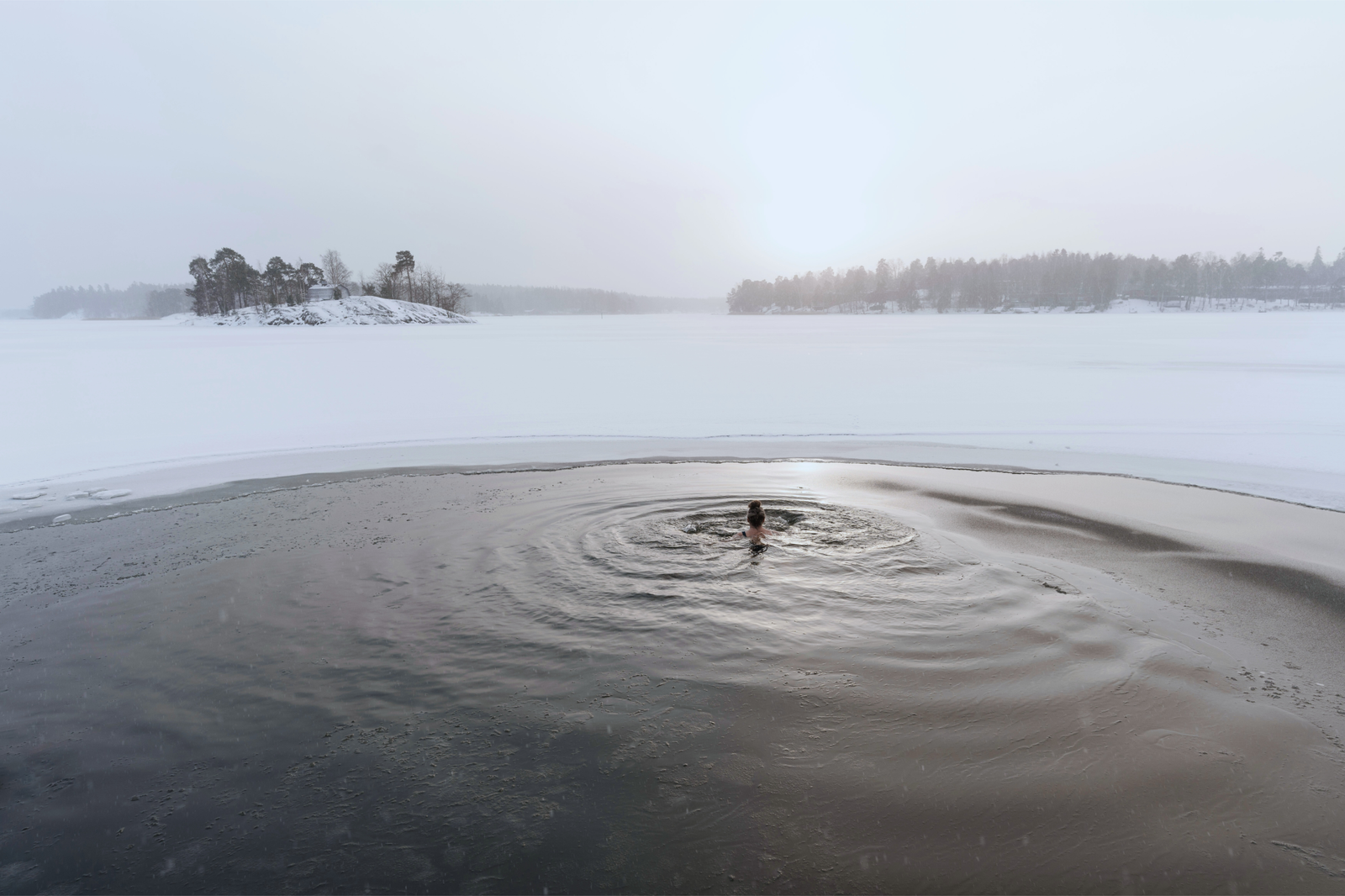How Ice Baths Improve Sleep: What The Science Says

Many people have reported better sleep with regular ice baths. But timing, duration, and technique can significantly influence the outcomes. Let’s explore the science behind how ice baths affect your body and sleep, and the best practices for using them effectively.
What happens to your body during an ice bath?
When you first step into an ice bath, your body responds with a series of changes:
- Your body activates the sympathetic nervous system, aka its “fight or flight” response
- This causes your heart rate to increase as part of the initial cold shock
- With controlled breathing, your body transitions into parasympathetic activation, aka the body’s “rest and digest” system
- Your heart rate gradually decreases as your body adapts to the stressor
This form of controlled stress helps your body understand the difference between real threats and everyday worries. After the ice bath, your body can enter a deeper state of relaxation driven by the parasympathetic nervous system activation.
The Connection Between Ice Baths and Better Sleep
Research supports the benefits of cold water therapy for sleep. A study published in the Journal of Sleep Research found that whole-body cold water immersion:
- Reduced arousal and movement during sleep
- Enhanced deep sleep during the early part of the night
- May indirectly support recovery after exercise
As your body adapts to the cold, and for several hours after, it shifts towards the parasympathetic nervous system dominance, which promotes relaxation and supports deeper sleep.
When to Ice Bath
The timing of your ice bath can make the difference between improved sleep and disrupted sleep. The best window is typically 5-6 hours before bedtime, while taking one immediately before bed is generally not recommended.
Taking an ice bath too close to bedtime can cause problems. While the cold exposure initially lowers body temperature, your core temperature rebounds to warm itself up afterwards. Since sleep onset is tied to a natural drop in your core body temperature, this warming process can be counteractive and make it harder to fall asleep.
That said, everyone’s response is different. Some people get amazing sleep after an ice bath taken just 30-60 minutes before bed. You may need to experiment with different timing, temperatures (using a water chiller), frequencies, and durations to find what works best for you.
How Long To stay in
Keep your ice bath sessions short and effective. I recommend 2-5 minutes per session. Watch for warning signs and exit immediately if you experience dizziness, numbness, or intense discomfort.
Prolonged exposure can overstimulate your system and may lead to hypothermia in extreme cases.
What to do After the Plunge
How you warm up after an ice bath affects the benefits you receive:
Natural Warming (Maximum Benefits)
Allow your body to warm up naturally without a towel and air dry completely. This method might cause shivering but provides the most benefits by promoting better circulation and deeper relaxation.
The downside is that it’s less comfortable and takes more time.
Quick Warming (Reduced Benefits)
You can also dry off with a towel, put on warm clothes, take a warm shower, or drink hot tea. While more comfortable, these methods shorten the cold exposure’s after-effects, which may reduce some of its benefits.
Building a Routine for Better Sleep
Just like any healthy habit, consistency is key. Aim for ice baths 2-3 times per week and give your body time to adjust, as sleep improvements may not happen overnight.
Pay attention to how your body responds. With regular practice, you might find yourself falling asleep faster and experiencing deeper, more restful sleep throughout the night.
Common Mistakes to Avoid
To maximize the sleep benefits from ice baths, avoid these common mistakes:
- Taking ice baths too close to bedtime
- Staying in the water too long
- Expecting immediate results
Conclusion
Ice baths offer a unique and accessible way to improve your sleep. While the initial shock of cold water might be intense, the resulting deep relaxation and improved sleep quality could be worth the temporary discomfort.
Remember that everyone’s body responds differently to cold therapy. The key is to find your own balance with timing, duration, and warming techniques. Start slowly, be consistent, and listen to your body as you build a routine that works best for you.
Cold exposure isn’t safe for everyone. If you have a medical condition like heart disease, talk to your doctor before trying cold plunges. It’s always better to be safe, especially if you have any underlying health issues.
FAQs
Medical Disclaimer
The information contained in this post is for informational and educational purposes only. It is not intended to provide medical advice or to take the place of such advice or treatment from a personal physician. All readers/viewers of this content are advised to consult their doctors or qualified health professionals regarding specific health questions or before embarking on any new health or wellness routine, including saunas and cold plunging. Neither the author(s) nor the publisher of this content take responsibility for possible health consequences of any person or persons reading or following the information in this educational content. All viewers of this content, especially those taking prescription or over-the-counter medications, should consult their physicians before beginning any cold plunging routine or other health or wellness program.








